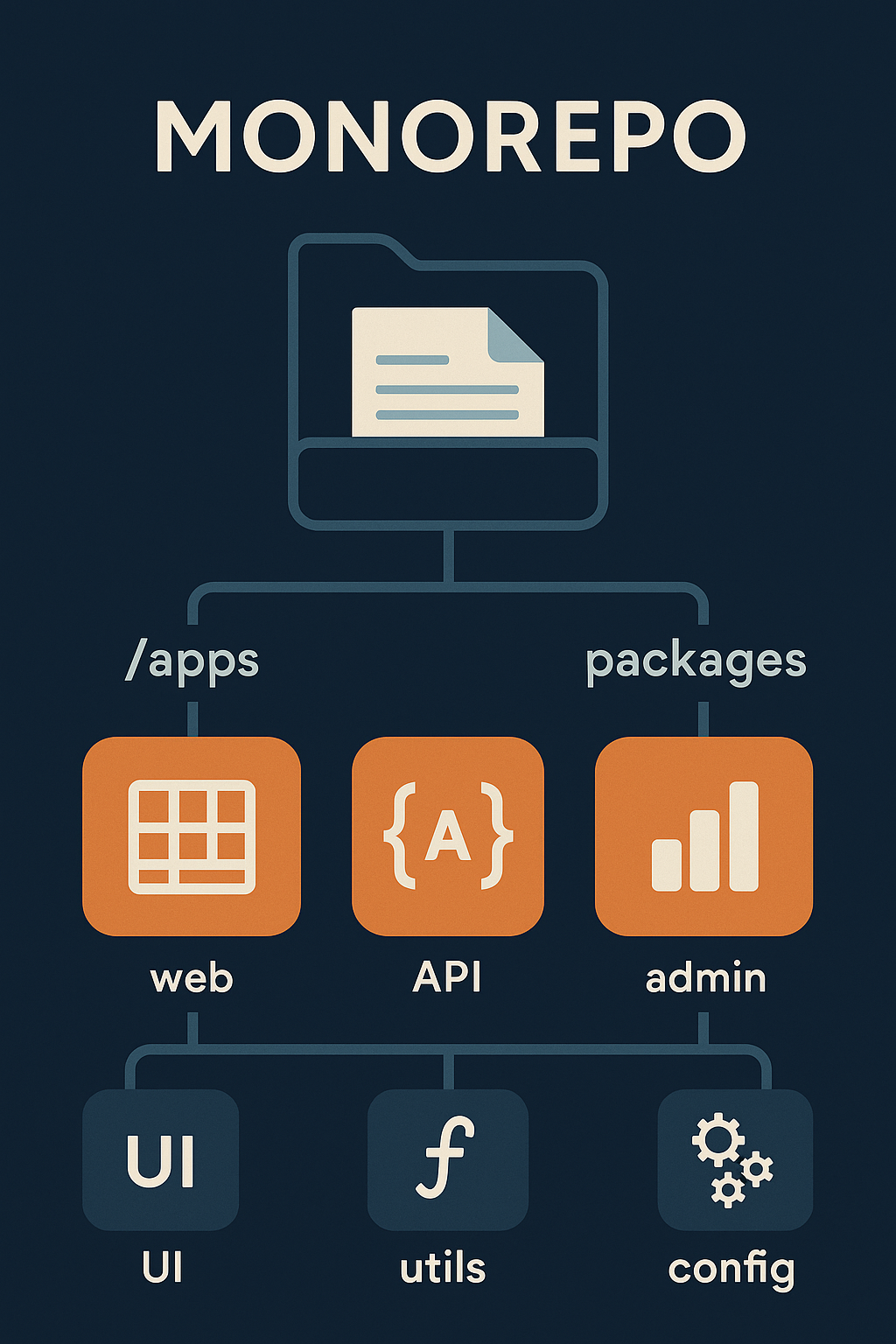
As modern web apps grow more complex, managing separate frontend, backend, and shared libraries across multiple repositories can quickly become a bottleneck. Dependency drift, duplicated configs, and scattered tooling slow teams down. That’s where monorepos come in. By housing multiple apps and packages in a single repository, a monorepo streamlines collaboration, enforces consistency, and makes scaling large full stack projects simpler and faster. But it also brings its own challenges. Let’s explore how to structure a scalable monorepo that empowers your team rather than holding it back.
Why Choose a Monorepo?
A monorepo isn’t just a trendy tool — it addresses real pain points that surface as your project or organization grows:
- Shared libraries: Reuse components, types, and utilities between frontend and backend.
- Atomic changes: Update multiple apps and packages in a single commit.
- Consistent tooling: Centralize ESLint, Prettier, testing, and CI/CD configurations.
- Simplified dependency management: Avoid version mismatches and duplicated installs.
- Improved developer experience: Onboard faster with a single clone and unified scripts.
From small startups to large teams, these benefits help keep projects maintainable and predictable as they scale.
Typical Monorepo Structure
A well-organized monorepo often looks something like this:
/apps
/web # Next.js frontend
/api # Node.js or NestJS backend
/admin # Admin dashboard
/packages
/ui # Shared React components
/utils # Utility functions and helpers
/config # Shared ESLint, Prettier, or Tailwind config
/turbo.json # Turborepo or Nx config (if used)
/package.json
/tsconfig.json
This structure separates deployable applications (/apps) from reusable code and configs (/packages), keeping your codebase clean and modular.
Choosing the Right Tools
Monorepos aren’t just about folder layout — tooling makes or breaks them. Popular options include:
- Turborepo: Fast builds, caching, and task orchestration, designed for JavaScript/TypeScript.
- Nx: Rich plugin ecosystem, advanced dependency graph, great for microservices or polyglot repos.
- Bazel: Powerful, but steeper learning curve, often used by large enterprises.
- Lerna (with npm workspaces): Lightweight, still useful for simple use cases.
Each tool has trade-offs, so choose what fits your team’s size, tech stack, and future plans.
Scaling Beyond Code
A scalable monorepo isn’t only about code organization:
- CI/CD pipelines: Optimize builds to run only where code changes.
- Automated linting and testing: Enforce quality and catch issues early.
- Code ownership and review rules: Clarify who maintains what.
- Documentation: Keep project structure and tooling explained for newcomers.
These practices help large teams stay productive without stepping on each other’s toes.
Common Pitfalls and How to Avoid Them
Monorepos come with challenges too:
- Build times can grow: Mitigate this with task caching and incremental builds.
- Too many dependencies: Use strict boundaries and avoid importing everything everywhere.
- Lack of ownership: Define clear maintainers for each package or app.
- Over-optimization: Start simple; add complexity only when scaling truly requires it.
By proactively planning, these issues can be managed — and often avoided entirely.
Conclusion
A monorepo isn’t a silver bullet, but when structured thoughtfully, it unlocks faster development, better collaboration, and scalable architecture for full stack projects. Whether you’re building an internal tool, a SaaS product, or a suite of microservices, investing in a clean monorepo now pays dividends as your team and codebase grow.
If you’re starting your next full stack app, consider asking:
“Could a monorepo make our lives easier?”
Often, the answer is yes — if you design it well from the start.